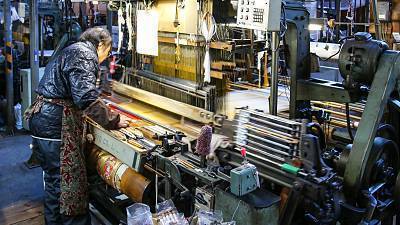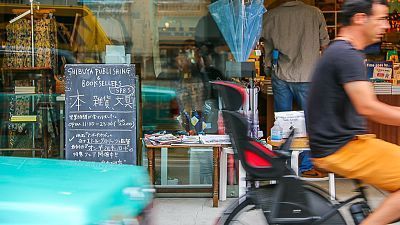Shinrinyoku in Kirishima

Taking a small deviation off the regular Chotto Zeitaku series, this edition is about shinrinyoku, or forest bathing, an indulgence of nature. The idea is to be surrounded by nature, soak in the negative ions and leave feeling refreshed and rejuvenated. Urban dwellers will find this practice exceptionally useful, if all you face is a concrete jungle on a daily basis and do not have the time to slow down and relax. There are numerous places where one can participate in shinrinyoku, but my destination for today was Kirishima in Kagoshima Prefecture.

I started my two day one night trip at Kagoshima Airport. While public transport is available for access to and within the area, a rental car was my choice of transport as it was the most convenient for me. From the airport, it was a 30 to 45 minute drive into the Kirishima area where my adventure began. Note that volcanic activity in the area may result in some roads and hiking trails being closed as was the case when I was there at the end of October 2017. It is recommended to check for the latest updates in our Kirishima Travel Guide and at the tourist information centers at the airport and in town.
Part of my route covers the honeymoon route taken by noted Japanese revolutionaire Sakamoto Ryoma who was one of the key figures instrumental to the end of the Tokugawa Shogunate and the start of the Meiji Period (1868 to 1912). Widely regarded as the first person to do a honeymoon trip in Japan, Sakamoto Ryoma visited a number of spots that remain popular to this day.
My first stop was Ebino Kogen, or Ebino Plateau. When I was there, part of the hiking trail was closed off due to volcanic activity and as such, I could only do a small loop around the lakes. It was a good start for me to warm up in preparation for the more exciting hike to the peak of Mount Takachiho which I did the following day. One of the nice things about hiking in Ebino Kogen was that it is a comfortable route for people of all ages, even children. Routes can take as little as 60 minutes for a quick trip to the nearest look out point and back, or up to 180 minutes if on the trail that visits all the lakes.







Kirishima Shrine was next on my list, and the impressive shrine surrounded by nature was also visited by Sakamoto Ryoma and his wife. The shrine is devoted to Ninigi no Mikoto, the grandson of the sun goddess Amaterasu, and it is said that the lineage of the current Imperial Family began from him. I spent some time wandering around the shrine grounds in a place rich with Japanese mythology, admiring the old trees, shrine architecture and the stillness of the forest.









After a big day, I headed over to Kirishima Onsen where I spent the night, enjoying the baths at my accommodation. The hot spring town has a variety of accommodation offering quality baths regardless of whichever you decide on. Soaking in a bath was a great way to relax at the end of the day and especially so after all that walking.


The next day I did my big climb of the trip, the ascent to Takachiho no Mine, the peak of Mount Takachiho, following in the footsteps of many others before me. Numerous myths and folklores originate from the area and illuminate its importance in the early history of Japan. This adds a slight mystical aspect when you're standing high on a mountain above the towns or beneath tall trees in the forest.
Climbing to the peak requires sturdy hiking shoes as the path consists of small stones and rocks. It takes about 90 minutes to reach the highest point from the visitor center and slightly less time to descend. This route is a good challenge for those who want a short hike with a kick as the entire loop to the top from the visitor center can be completed within four hours.






All that hiking left my throat a little dry, and off I went in search of some local alcoholic beverage. Shochu is a distilled spirit popular in Kyushu, and the de facto drink instead of sake that is more popular in the rest of Japan. I managed to visit two distilleries, the Akarui Noson distillery and the Kirishima Shochu distillery. Both places offer free tours of the production process and offer shochu tasting at no extra charge. Note that tours of the Kirishima distillery (Kirishima Factory Garden) requires advance reservation which has to be done by phone. Japan has a zero tolerance law when it comes to drinking and driving, so please look for alternative transportation options if you plan to drink.
I found it interesting to tour the distillery and learn more about the process and ingredients that go into making shochu. Unlike sake which is made from rice, shochu is typically made from rice and sweet potato (imo) especially in the Kagoshima and Miyazaki prefectures where I was at. Imo shochu is the local shochu and the best way to drink it is mixed with hot water to bring out the fragrance of the sweet potato.










To end my trip to Kirishima, I paid a visit to one last spot Sakamoto Ryoma and his wife visited on their honeymoon, on the way back to Kagoshima Airport. Inukai Waterfall is located just 300 meters from the main road and is only accessible via a wooded path. The trail starts off steep before flattening and leading to the impressive 36 meter tall falls.
With that, I headed back to Tokyo satisfied and revitalised. Hiking up a mountain, checked. Dwarfed by tall old trees and waterfalls, checked. Surrounded by legends and local folklore, checked. Sample local delights (I mean alcohol), checked. It was a trip filled with a bit of everything in a small area, perfect for those looking for a taste of old Japan and not much time to spare.








